Table of Contents
- Disinfecting Your Home: Crafting a Safe Sanctuary
- Cleaning vs. Disinfecting: Clarifying the Concepts
- The Comprehensive Approach: Cleaning Followed by Disinfecting
- Why the Need for Continued Disinfection?
- Key Areas to Focus On
- How Often Should You Disinfect Your Home?
- Types of Disinfectants: A Simple Guide
- DIY Disinfectants: A Homemade Approach to Germ-Fighting
- Tools for Disinfecting
- The Psychological Impact of a Clean Home
- Sustainability and Disinfection
- Educating the Next Generation
- In Conclusion
- FAQs on Disinfecting
Disinfecting Your Home: Crafting a Safe Sanctuary

The COVID-19 pandemic highlighted the significance of maintaining a clean and germ-free environment, particularly within our homes. With many of us spending more time indoors than ever before, the importance of regular disinfection became paramount.
Now, as the world adapts to the post-pandemic era, the question arises: Should we continue this heightened level of cleanliness? The answer is a resounding “yes.” Keeping a sanitized environment remains essential not just for our physical health, but for our peace of mind as well.
Cleaning vs. Disinfecting: Clarifying the Concepts
Navigating the world of home maintenance can be tricky, especially when it comes to understanding the roles of cleaning and disinfecting. Though they might seem similar, each serves a distinct purpose. Let’s break it down:
Cleaning
- What it does: Cleaning involves physically removing dirt, grime, and some germs from surfaces. It’s about getting rid of visible contaminants to make areas look and feel tidy.
- How it works: By using soap or detergent combined with water, and through actions like scrubbing or wiping, cleaning effectively reduces the number of germs on a surface. However, it doesn’t necessarily kill the most resilient of these germs.
Disinfecting
- What it does: Disinfecting targets the microorganisms that remain after cleaning. Its primary goal isn’t to make a surface look spotless but to ensure it’s free from harmful germs.
- How it works: Disinfectants use chemicals designed to kill bacteria, viruses, and fungi. By applying them to surfaces (after cleaning), you ensure that potential pathogens are neutralized, rendering the environment safer.
The Comprehensive Approach: Cleaning Followed by Disinfecting
For the highest level of hygiene, especially in areas where germs are more likely to spread (like bathrooms or kitchens), it’s beneficial to clean first and then disinfect. Cleaning ensures the surface is free from visible dirt, making disinfectants more effective in their germ-killing action.
In essence, while both cleaning and disinfecting are integral to maintaining a hygienic environment, understanding their distinct roles ensures that we use them effectively and achieve optimal results.
Why the Need for Continued Disinfection?
While the most immediate threat of COVID-19 may be behind us, our understanding of microbes and their transmission has forever changed. Numerous infectious agents, from common cold viruses to more serious pathogens, persist in our surroundings.
Using disinfectants in our homes can minimize the risk of various infections, promoting overall health for ourselves and our families.
Moreover, as travel resumes and social interactions increase, there’s an inevitable risk of introducing new pathogens into our living spaces. Regular disinfection can help curb the potential spread of these agents.
Key Areas to Focus On
Certain areas in the home are more prone to germ buildup due to frequent touch or exposure to various contaminants. Here are some high-touch points to consider:
1. Doorknobs and Handles
Every time someone enters or leaves a room, there’s a good chance they touch the doorknob or handle. This includes not just the main doors, but also cabinet doors, refrigerator handles, and closet doors.
2. Light Switches
Much like doorknobs, light switches are regularly touched whenever someone wants to illuminate or darken a room. They’re often overlooked in regular cleaning, but they are crucial touchpoints that need disinfection.
3. Remote Controls and Electronics
Devices like TV remotes, computer keyboards, and mice are regularly handled, often by multiple members of the household. Mobile phones are another significant item that requires attention since they’re frequently touched and held close to the face.
4. Kitchen Surfaces
The kitchen, being a hub of activity, has multiple high-touch surfaces. Countertops, sink handles, appliance buttons and dials (like those on microwaves and ovens), refrigerator doors, and cutting boards are just a few that stand out. It’s particularly crucial to disinfect these areas, especially after handling raw meat or poultry, to prevent cross-contamination.
5. Bathroom Surfaces
Bathrooms, given their function, are ripe for bacterial growth. Key areas include toilet handles, faucet handles, light switches, and frequently used items like toothbrush holders.
6. Railings and Banisters
For homes with stairs, the railings or banisters are frequently gripped for support and thus can become a hotbed for germs.
7. Personal Items
Think about the items you touch multiple times a day: eyeglasses, wallets, keys, and watches. These personal items can carry germs from public places into the home.
8. Children’s Toys
Kids often put toys in their mouths, and these toys can end up on the floor, in outdoor areas, or in other germ-prone environments. Regular disinfection, suitable to the toy’s material, can help keep children safe.
If you have a communal workspace at home, consider the shared use of items like pens, staplers, or even the desk surface itself.
10. Laundry Baskets
Clothes can carry germs, especially if they’ve been worn outside. The baskets holding them can then become contaminated. It’s essential to occasionally clean and disinfect laundry baskets and hampers.
How Often Should You Disinfect Your Home?
Disinfecting has taken center stage in home maintenance, especially in recent times. But how frequently should one be disinfecting? Like many household tasks, it’s not a one-size-fits-all answer. The frequency of disinfection depends on several factors, from the type of room to the activities within it.
1. High-Traffic Areas
Areas like the living room, kitchen, and bathrooms experience a lot of activity daily. With more usage comes a higher potential for germs.
- Recommendation: Disinfect daily or every other day. Focus on high-touch surfaces like doorknobs, light switches, countertops, and faucet handles.
2. Home Offices and Workspaces
If you’re working from home or have children studying from home, these spaces can accumulate germs from frequent touch.
- Recommendation: Disinfect the workspace at least once a week, and more often if it’s a shared space. Give extra attention to keyboards, mouse devices, and any shared stationery.
3. Bedrooms
Bedrooms generally have less foot traffic than living areas, but they can harbor germs, especially on nightstands and bed frames.
- Recommendation: Disinfect weekly. If someone is sick, increase the frequency and ensure you’re washing bed linens regularly.
4. Children’s Play Areas
Kids’ toys can be a hotbed for germs, especially if they’re frequently shared or if your child often has playdates.
- Recommendation: Disinfect toys and play areas after use, or at least twice a week. Cloth toys should be washed, while plastic toys can be wiped down with a disinfectant.
5. After Illness
If someone in your household falls ill, particularly with contagious illnesses like the flu or a cold, ramp up your disinfecting routine.
- Recommendation: Disinfect daily, focusing on the sick person’s room and any shared spaces. Don’t forget about remote controls, mobile phones, and other commonly used items.
6. Special Considerations for Pets
Pet areas, including feeding bowls, toys, and sleeping areas, should also be kept clean.
- Recommendation: Disinfect pet areas weekly, or more frequently if your pet spends a lot of time outdoors or interacts with other animals.
Remember that while disinfecting is crucial for eliminating germs, overuse of disinfectants can lead to other problems, such as the potential development of resistant microbial strains or exposure to excessive chemicals. As with many aspects of home care, balance is key. Regular cleaning, combined with thoughtful disinfection of high-risk areas, will keep your home both clean and safe.
Types of Disinfectants: A Simple Guide
Disinfectants play a pivotal role in maintaining a germ-free environment. Based on their composition and origin, disinfectants can be broadly categorized into natural and chemical types. Each has its own set of benefits and applications. Let’s delve into some of the most commonly used disinfectants in each category:
Natural Disinfectants

1. Vinegar (Acetic Acid)
- Properties: Vinegar is mildly acidic, which helps in its antimicrobial action. It’s effective against certain bacteria and fungi but less so against viruses.
- Applications: It can be used on most surfaces in the home, especially glass and mirrors, to leave them streak-free. However, it’s not recommended for natural stone surfaces as it can erode them.
- Limitations: While it’s a safer alternative to chemical disinfectants, it’s not as potent against more resilient pathogens.
2. Hydrogen Peroxide
- Properties: This is a non-toxic substance that acts as an oxidizer, making it effective against a wide range of microorganisms.
- Applications: It can be used to disinfect surfaces, especially in the kitchen and bathroom. When used in low concentrations, it can also be used for wound cleaning.
- Limitations: Hydrogen peroxide can bleach fabrics and is sensitive to light, so it needs to be stored in dark containers.
3. Tea Tree Oil
- Properties: Tea tree oil possesses natural antiseptic and antifungal properties.
- Applications: It’s frequently used in skincare products but can also be used diluted in water as a household disinfectant.
- Limitations: It might be less effective than chemical alternatives and can cause allergic reactions in some individuals.
Chemical Disinfectants

1. Alcohol (Ethanol or Isopropanol)
- Properties: Alcohol at concentrations of 60-80% is effective against many types of microorganisms, including viruses.
- Applications: Commonly found in hand sanitizers, it’s also used to disinfect surfaces, especially in healthcare settings. It’s particularly useful for electronics due to its fast evaporation rate.
- Limitations: It can be drying to the skin and is flammable. It’s also not effective against certain types of pathogens.
2. Quaternary Ammonium Compounds (Quats)
- Properties: These are positively charged molecules that disrupt the cell membranes of microbes.
- Applications: Widely used in household and industrial cleaners, they’re effective against a range of microorganisms.
- Limitations: Over-reliance can lead to resistant microbial strains. Some people might also find them irritating.
3. Chlorine Bleach (Sodium Hypochlorite)
- Properties: It’s a potent oxidizing agent that destroys a broad range of pathogens.
- Applications: Used for disinfecting surfaces, especially in healthcare and food processing. Also used for laundry to sanitize and remove stains.
- Limitations: It’s corrosive and can damage certain surfaces and fabrics. Prolonged exposure can be harmful, and it releases toxic fumes.
4. Phenolics
- Properties: Phenolic compounds denature proteins and disrupt cell membranes of microorganisms.
- Applications: Common in household disinfectants and also used in healthcare settings.
- Limitations: Can be irritating to the skin and eyes. Some phenolic compounds have been associated with environmental concerns.
Choosing a disinfectant depends on the intended application, desired potency, and concerns about safety or environmental impact. While chemical disinfectants generally offer a broader spectrum of antimicrobial activity, natural ones are favored for being environmentally friendly and less toxic. However, irrespective of the choice, it’s paramount to follow manufacturer guidelines and take necessary precautions during usage.
DIY Disinfectants: A Homemade Approach to Germ-Fighting
In an age where everyone is becoming more conscious of the ingredients in the products they use, DIY solutions have risen in popularity. This trend hasn’t skipped the world of disinfectants. Many people are turning to homemade recipes to keep their homes germ-free. But how do these DIY disinfectants compare to the commercial ones? Let’s dive in.
Common Ingredients in DIY Disinfectants:
- White Vinegar: An age-old cleaning solution, white vinegar has mild antibacterial properties. Its acidic nature can help break down dirt and grime, making it a popular choice for natural cleaning.
- Hydrogen Peroxide: A potent disinfectant on its own, hydrogen peroxide can kill a wide range of pathogens. It’s often used in medical settings and is available in different concentrations.
- Tea Tree Oil: This essential oil has natural antifungal and antibacterial properties, making it a favorite ingredient in many DIY cleaning recipes.
- Alcohol: Rubbing alcohol, especially solutions with at least 70% alcohol, can be an effective disinfectant. It’s quick to evaporate and can kill many germs on contact.
Efficacy of DIY Disinfectants vs. Commercial Products:
- Broad Spectrum Efficacy: While many DIY disinfectants, like alcohol and hydrogen peroxide, can effectively kill many pathogens, commercial disinfectants are often designed to tackle a broader spectrum of germs.
- Consistency: Commercial products undergo rigorous testing to ensure they work consistently. With DIY solutions, the efficacy might vary based on ingredient proportions and the quality of the raw materials.
- Residual Effect: Some commercial disinfectants offer a residual disinfecting effect, continuing to work long after application. This is a feature not commonly found in DIY recipes.
- Safety & Stability: Commercial products come with labels indicating their safe use, storage, and potential dangers. DIY mixtures might lack these guidelines, posing risks if combined or stored improperly.
Ways to Maximize the Efficacy of DIY Disinfectants:
- Follow Proven Recipes: Not all online recipes are created equal. Seek out those backed by research or from reputable sources.
- Store Properly: Store DIY disinfectants in dark, cool places, and use them quickly. Natural ingredients may degrade or lose potency over time.
- Application Time: Ensure the solution remains on the surface long enough to be effective. Some disinfectants need to be in contact with the germs for a specific period to kill them effectively.
- Combine Methods: Using a physical cleaning method (like scrubbing) followed by the application of a DIY disinfectant can enhance the overall cleaning and disinfecting process.
DIY disinfectants can be effective alternatives to commercial products, especially for those looking for natural options or in situations where commercial disinfectants are hard to come by. However, understanding their limitations and using them wisely is crucial. Combining them with good cleaning practices and recognizing situations where a commercial-grade disinfectant might be necessary can help maintain a safe and germ-free environment.
Tools for Disinfecting
Keeping your home germ-free doesn’t require an army, just the right tools. Let’s dive into some of the popular tools for disinfecting, breaking down their uses and benefits in a digestible manner.
1. Disinfectant Wipes
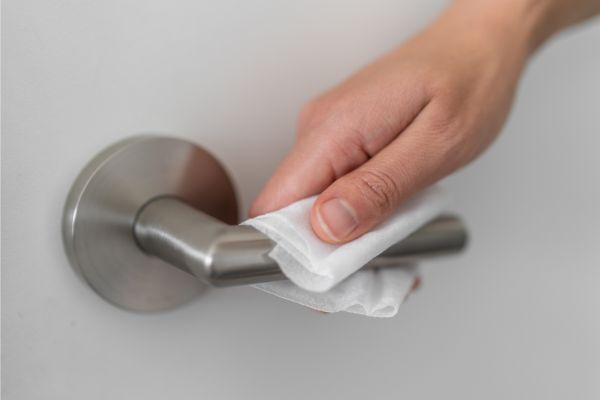
- Use: Quick and convenient, these pre-soaked wipes are perfect for wiping down high-touch surfaces.
- Why They Shine: They’re portable and require no extra liquid. Great for on-the-go disinfecting, like in your car or at work.
2. Sprays

- Use: Effective for covering larger areas, from kitchen countertops to bathroom tiles.
- Why They Shine: They provide an even distribution of disinfectant, ensuring that surfaces are well-coated for optimal germ-killing action.
3. Ultraviolet (UV) Light Devices
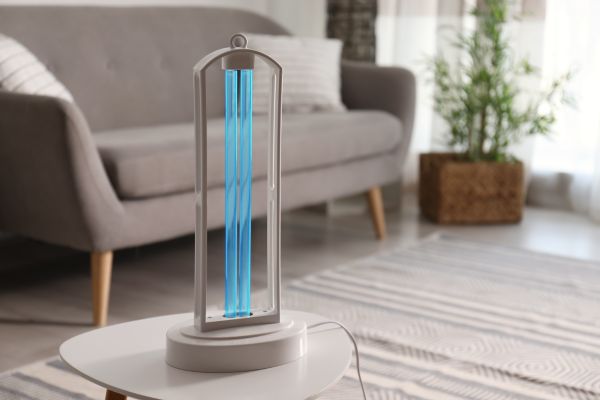
- Use: Uses UV-C rays to kill or inactivate germs and pathogens.
- Why They Shine: Chemical-free disinfection, ideal for gadgets and tools. Remember, direct UV exposure isn’t safe for skin, so use with caution!
4. Steam Cleaners

- Use: Utilizes high-temperature steam to disinfect surfaces like floors, curtains, and upholstery.
- Why They Shine: They not only disinfect but also deep-clean, removing grime and dirt. Plus, it’s a chemical-free method.
5. Microfiber Cloths
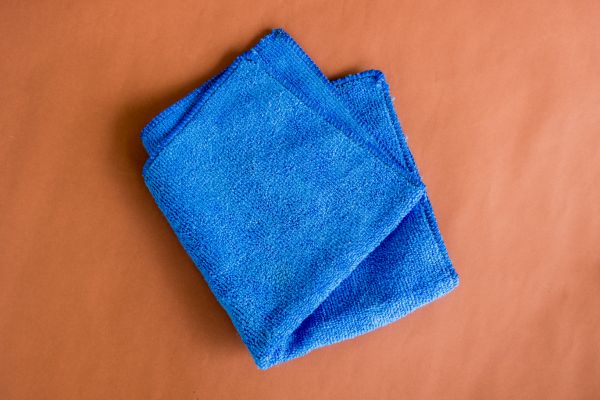
- Use: Effective in capturing germs when used with a disinfectant solution.
- Why They Shine: Reusable and environmentally friendly. Their unique fiber structure ensures a thorough clean, capturing more germs than regular cloths.
6. Nebulizers or Foggers
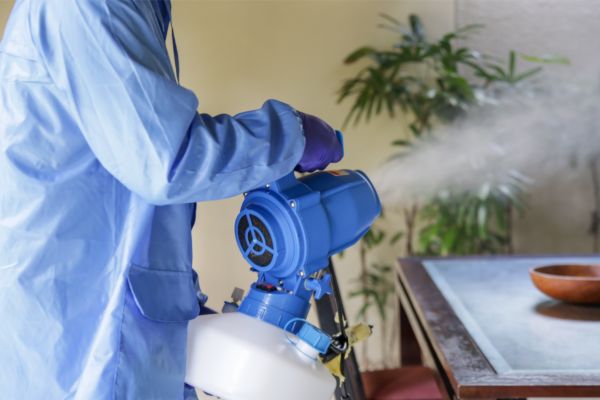
- Use: Turns disinfectant solutions into a mist, covering vast areas.
- Why They Shine: Excellent for large spaces or when you need to disinfect quickly. Often used in public spaces or after events.
7. Hand Sanitizers
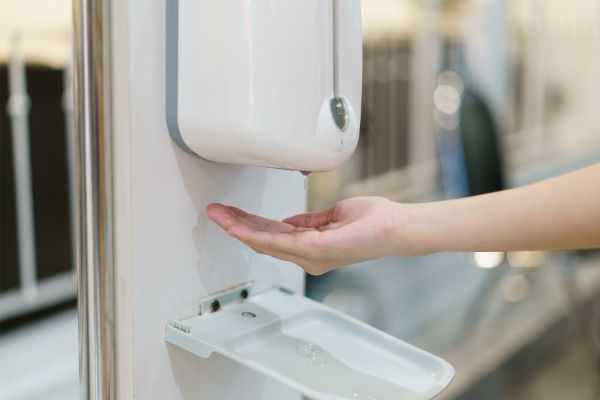
- Use: For personal disinfection, especially when soap and water aren’t available.
- Why They Shine: Portable and quick. A must-have in your bag or pocket, especially when traveling.
Having the right tools in your disinfection arsenal ensures that you’re ready to combat germs at any given moment. While all these tools are effective, it’s essential to read the manufacturer’s guidelines and use them properly to ensure safety and efficiency. With these in hand, a cleaner, safer home is just a wipe, spray, or beam of light away!
The Psychological Impact of a Clean Home
Beyond the physical health benefits of a disinfected environment, there’s a profound psychological impact as well. The act of maintaining a clean home can provide a sense of control, especially in a world where unpredictability has become the norm. There’s comfort in knowing that our immediate environment is free of harmful pathogens.
A clean home can also contribute to reduced stress and anxiety levels. Clutter and mess can inadvertently heighten feelings of chaos and disarray. In contrast, a tidy and disinfected space often translates to a calm and serene atmosphere. This environment not only promotes mental well-being but can also improve sleep patterns and overall mood.
Sustainability and Disinfection
As we continue to prioritize cleanliness in the post-pandemic era, it’s also essential to consider the environmental impact of our choices. Traditional disinfectants, while effective, can sometimes contain chemicals that may not be eco-friendly.
It’s worthwhile to explore sustainable disinfection methods or products that align with environmental conservation efforts. For instance, opting for biodegradable wipes or refilling spray bottles instead of constantly buying new ones can make a difference.
Educating the Next Generation
With the experiences garnered from the pandemic, there’s an opportunity to educate the younger generation about the importance of cleanliness and hygiene. Children should be taught the proper techniques of washing hands, using disinfectants, and understanding when and why it’s essential to clean. This knowledge will not only protect them but will also instill habits that will benefit society at large.
In Conclusion
The post-pandemic world offers a new perspective on many aspects of our lives. While we’re all eager to embrace the freedom and opportunities it brings, it’s crucial not to neglect the lessons we’ve learned. Continuing to prioritize disinfection in our homes is one such lesson. It’s not merely about eliminating germs; it’s about creating a haven where our families can thrive, both physically and mentally.
FAQs on Disinfecting
1. What is the difference between cleaning and disinfecting?
Cleaning refers to the removal of dirt, grime, and some germs from surfaces, typically using soap and water. Disinfecting, on the other hand, involves using chemicals to kill germs on surfaces, reducing the risk of infection.
2. How often should I disinfect surfaces in my home?
High-touch surfaces like doorknobs, switches, countertops, and remote controls should be disinfected daily, especially if someone in the home is ill. Other less-frequently touched surfaces can be disinfected weekly or when visibly dirty.
3. Can I make my own disinfectant at home?
Yes, many people use solutions like diluted bleach or alcohol, as well as natural ingredients like white vinegar or tea tree oil. However, effectiveness can vary, and not all homemade solutions will be as broad-spectrum as commercial disinfectants.
4. Are natural disinfectants as effective as chemical ones?
While natural disinfectants can kill certain germs, they may not be as broad-spectrum as some commercial, chemical-based products. It’s essential to research and ensure the disinfectant is suitable for your needs.
5. Can overusing disinfectants lead to resistant bacteria?
Yes, the overuse or misuse of disinfectants can potentially lead to the emergence of resistant microbial strains. It’s crucial to use disinfectants as directed and avoid over-reliance.
6. Is it safe to mix different disinfectants?
No, you should not mix different disinfectants unless the product label explicitly says it’s safe. Mixing can produce harmful fumes or decrease the solution’s efficacy.
7. What concentration of alcohol is effective as a disinfectant?
A solution with at least 70% alcohol (like isopropyl alcohol) is generally recommended for disinfection purposes.
8. How long do I need to leave a disinfectant on a surface for it to be effective?
The contact time varies by product. Check the product label; most will specify how long the disinfectant should remain wet on the surface to be effective.
9. Are disinfecting wipes a good alternative to sprays?
Disinfecting wipes can be effective on smaller, non-porous surfaces. Ensure the surface remains wet for the duration specified on the label.
10. How should I store my disinfectants?
Store disinfectants in a cool, dry place, away from children and pets. Ensure they are sealed tightly to prevent evaporation and degradation.
11. Do disinfectants expire?
Yes, like all products, disinfectants have a shelf life. Check the product label for an expiration date, and note that once opened, the efficacy can decrease over time.
12. Can I use disinfectants on my hands?
No, disinfectants are meant for surfaces and can be harsh or toxic to the skin. For hands, use soap and water or hand sanitizers that are formulated for skin use.
13. What precautions should I take while using disinfectants?
Always read and follow label instructions, ensure good ventilation, wear gloves when necessary, and keep products out of the reach of children and pets. Avoid contact with eyes and wash your hands after use.
14. Can I disinfect soft surfaces like carpets or sofas?
Many disinfectants are designed for hard, non-porous surfaces. For soft surfaces, check the product label to ensure it’s suitable. Alternatively, consider using soap and water or specific cleaners designed for fabric.15. Is UV light effective for disinfection?
UV-C light can be effective at killing or inactivating certain microbes. However, its effectiveness can depend on factors like exposure time and light intensity. Not all UV devices are equally effective, so research and choose products wisely.